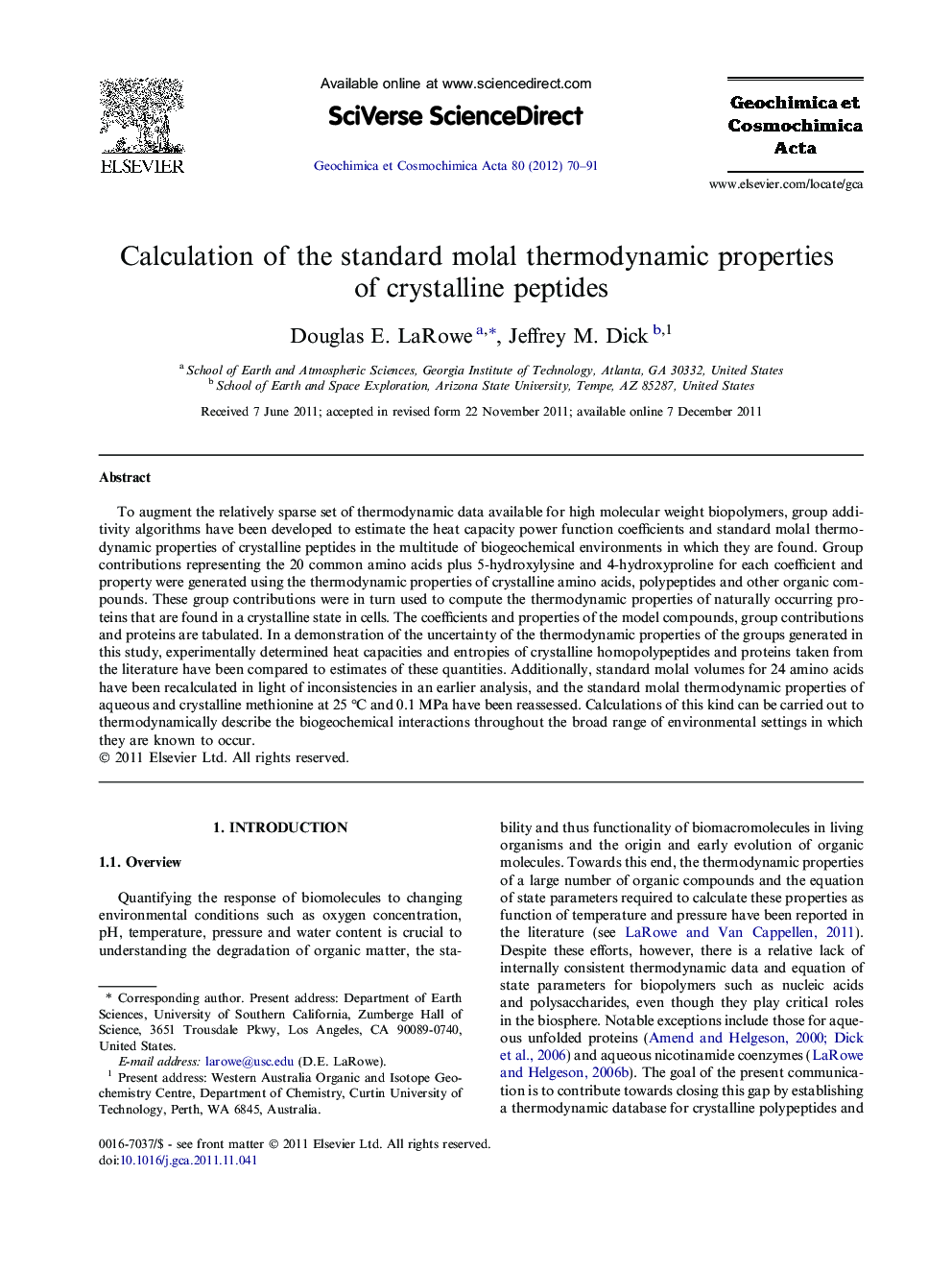| Article ID | Journal | Published Year | Pages | File Type |
|---|---|---|---|---|
| 4702828 | Geochimica et Cosmochimica Acta | 2012 | 22 Pages |
Abstract
To augment the relatively sparse set of thermodynamic data available for high molecular weight biopolymers, group additivity algorithms have been developed to estimate the heat capacity power function coefficients and standard molal thermodynamic properties of crystalline peptides in the multitude of biogeochemical environments in which they are found. Group contributions representing the 20 common amino acids plus 5-hydroxylysine and 4-hydroxyproline for each coefficient and property were generated using the thermodynamic properties of crystalline amino acids, polypeptides and other organic compounds. These group contributions were in turn used to compute the thermodynamic properties of naturally occurring proteins that are found in a crystalline state in cells. The coefficients and properties of the model compounds, group contributions and proteins are tabulated. In a demonstration of the uncertainty of the thermodynamic properties of the groups generated in this study, experimentally determined heat capacities and entropies of crystalline homopolypeptides and proteins taken from the literature have been compared to estimates of these quantities. Additionally, standard molal volumes for 24 amino acids have been recalculated in light of inconsistencies in an earlier analysis, and the standard molal thermodynamic properties of aqueous and crystalline methionine at 25 °C and 0.1 MPa have been reassessed. Calculations of this kind can be carried out to thermodynamically describe the biogeochemical interactions throughout the broad range of environmental settings in which they are known to occur.
Related Topics
Physical Sciences and Engineering
Earth and Planetary Sciences
Geochemistry and Petrology
Authors
Douglas E. LaRowe, Jeffrey M. Dick,
